Explore Varanasi’s Hidden Treasures
1. A Historical Overview of Varanasi: The Oldest Living City
Varanasi, also known as Kashi or Benares, is one of the oldest cities in the world that has been continuously inhabited. Situated on the banks of the sacred river Ganges in the northern Indian state of Uttar Pradesh, Varanasi has a rich and fascinating history that dates back thousands of years.
The city’s history is deeply intertwined with Hindu mythology. According to legend, Varanasi was founded by Lord Shiva, one of the principal deities of Hinduism. It is believed that Lord Shiva and his consort, Parvati, used to reside here. This has made Varanasi a significant religious and cultural hub for Hindus from ancient times to the present day.
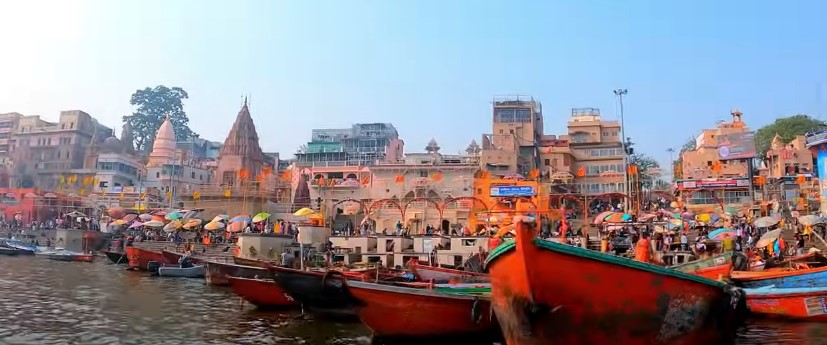
Varanasi’s historical significance is not limited to its religious importance. Archaeological evidence suggests that the city was an important center of trade and commerce as far back as the 11th century BCE. During this period, Varanasi was known for its high-quality silk and muslin fabrics, perfumes, ivory works, and sculpture.
Over the centuries, Varanasi has been a melting pot of cultures, witnessing the rise and fall of various dynasties and empires. The city came under the influence of the Maurya and Gupta Empires, which further established its status as a major center of learning and civilization. In the 7th century, the Chinese traveler Xuanzang visited Varanasi and documented its flourishing state.
The medieval period saw Varanasi becoming a focal point for scholars and philosophers. The city was renowned for its universities and institutions where subjects such as theology, philosophy, medicine, and mathematics were taught. Prominent scholars like Adi Shankaracharya and Ramanujacharya are said to have visited and taught in Varanasi, contributing to its reputation as a center of learning.
In the 16th century, Varanasi faced a significant shift under the Mughal Empire. Despite the Mughal invasion, the city continued to thrive as a center of culture and spirituality. The Mughal emperor Akbar even had a great admiration for the city and funded the reconstruction of many temples and buildings that had been damaged during earlier conflicts.
The British colonial period marked another chapter in the city’s history. Varanasi was an important center for the Indian independence movement. Many freedom fighters and activists hailed from the city or operated from here, including the likes of Pandit Madan Mohan Malaviya, who founded the Banaras Hindu University (BHU) in 1916. BHU remains one of the most prestigious educational institutions in India today.
Today, Varanasi is a bustling urban center that continues to attract millions of pilgrims and tourists from around the world. The city’s ghats, temples, and vibrant cultural scene make it a unique destination. The Ganges River, flowing through the city, remains a lifeline for both spiritual and daily activities.
In summary, Varanasi’s history is a tapestry woven with threads of mythology, commerce, education, and spirituality. Its continuous habitation for over three millennia stands as a testament to its enduring significance and resilience. Varanasi is not just a city; it is a living, breathing entity that embodies the timeless essence of Indian culture and heritage.
2. Spiritual Significance of Varanasi: The Heart of Hinduism
Varanasi, also known as Kashi, is often referred to as the spiritual capital of India. For centuries, it has been the heart of Hinduism and a major pilgrimage destination for Hindus from all over the world. This ancient city, nestled along the banks of the sacred Ganges River, holds immense spiritual significance.
According to Hindu mythology, Varanasi was founded by Lord Shiva, one of the principal deities in Hinduism. It is believed that Lord Shiva, along with his consort Parvati, resides in the city, making it a place of great spiritual power. Devotees believe that dying in Varanasi and being cremated along the Ganges grants moksha, or liberation from the cycle of life and death. This belief draws countless pilgrims to the city every year.
The ghats of Varanasi, a series of steps leading down to the river, are central to the city’s spiritual life. There are over 80 ghats, each with its own unique history and significance. The Dashashwamedh Ghat is one of the most prominent and busiest ghats, where the grand Ganga Aarti (a ritual of worship) is performed every evening. This mesmerizing ceremony, involving chants, fire, and rhythmic music, attracts both devotees and tourists, creating a deeply spiritual atmosphere.

Another significant ghat is the Manikarnika Ghat, known as the main cremation ghat. It is believed that cremation at this ghat ensures the soul’s release from the cycle of rebirth. The constant presence of funeral pyres here is a poignant reminder of the city’s spiritual importance and the Hindu belief in the impermanence of life.
Varanasi is also home to numerous ancient temples, each contributing to the city’s spiritual tapestry. The Kashi Vishwanath Temple, dedicated to Lord Shiva, is one of the most revered and visited temples in India. The temple’s golden spire and the Jyotirlinga (a devotional representation of Shiva) make it a central place of worship. The Sankat Mochan Hanuman Temple, dedicated to Lord Hanuman, and the Durga Temple, also known as the Monkey Temple, are other notable temples that attract thousands of devotees.
Apart from temples, Varanasi is a hub for various religious festivals and rituals. The city comes alive during festivals like Diwali, Holi, and Maha Shivaratri. Devotees gather in large numbers to celebrate these festivals with fervor and devotion. The annual Ganga Mahotsav, a five-day cultural festival, celebrates the holy river Ganges with music, dance, and traditional performances.
Varanasi’s spiritual significance is not limited to Hinduism alone. The city also holds importance in Buddhism and Jainism. Sarnath, located just a few kilometers from Varanasi, is where Lord Buddha delivered his first sermon after attaining enlightenment. This makes Varanasi a vital destination for Buddhist pilgrims as well. Similarly, several Jain temples in the city mark it as a significant site for Jains.
In conclusion, Varanasi’s spiritual significance is deeply rooted in its history, mythology, and religious practices. The city’s temples, ghats, and festivals offer a profound spiritual experience, making it a unique and sacred destination. Varanasi continues to be a beacon of spiritual enlightenment, drawing seekers of divine connection from all corners of the globe.
3. The Ghats of Varanasi: Sacred Steps to the Ganges
The ghats of Varanasi are a defining feature of this ancient city, offering a unique blend of spirituality, history, and culture. Stretching along the banks of the Ganges River, these ghats are more than just steps leading to the water; they are the heart and soul of Varanasi.
There are over 80 ghats in Varanasi, each with its own significance and charm. These ghats serve multiple purposes: as sites for religious rituals, social gatherings, and daily activities like bathing and washing. They are also important for ceremonies such as cremations, which hold deep spiritual meaning in Hinduism.

One of the most famous ghats is Dashashwamedh Ghat. According to legend, Lord Brahma performed ten (dasha) horse sacrifices (ashwamedh) here, giving the ghat its name. It is one of the busiest and most vibrant ghats in Varanasi, especially during the evening Ganga Aarti. This daily ritual involves the offering of lamps to the Ganges, accompanied by chants, music, and the presence of hundreds of devotees and tourists. The sight of the lit lamps floating on the river against the backdrop of the setting sun is truly mesmerizing.
Another significant ghat is the Manikarnika Ghat, the main cremation ghat in Varanasi. It is believed that cremation at this ghat ensures the soul’s release from the cycle of birth and rebirth, granting moksha. The continuous burning of funeral pyres here is a powerful reminder of the transient nature of life, and it adds a deeply spiritual dimension to the city.
Assi Ghat, located at the confluence of the Ganges and Assi rivers, is another notable ghat. It is popular among both locals and tourists for its relatively serene atmosphere. Morning yoga sessions, boat rides, and the Subah-e-Banaras program, which includes devotional music and cultural performances, make Assi Ghat a vibrant and enriching place to visit.
The ghats of Varanasi are not just about rituals and spirituality; they are also hubs of daily life. You will find people performing their morning ablutions, washing clothes, offering prayers, and engaging in lively conversations. The ghats are also lined with stalls selling flowers, religious items, and street food, adding to the bustling and colorful atmosphere.
Each ghat in Varanasi has its own story and significance. For example, the Harishchandra Ghat, another cremation ghat, is named after the legendary King Harishchandra, who is said to have worked here in service of truth and charity. The Tulsi Ghat is associated with the poet-saint Tulsidas, who is believed to have written parts of the Ramcharitmanas here. The Chet Singh Ghat is named after the local ruler Maharaja Chet Singh and is known for its historical significance during the battle with the British.
In summary, the ghats of Varanasi are an integral part of the city’s identity. They embody the spiritual essence of Varanasi and serve as a microcosm of its rich cultural heritage. Whether you are witnessing a ritual, taking a boat ride at sunrise, or simply soaking in the vibrant atmosphere, the ghats offer a unique and unforgettable experience. They are the sacred steps to the Ganges, guiding both locals and visitors on a spiritual journey in the heart of Varanasi.
4. Temples of Varanasi: A Pilgrim’s Guide
Varanasi, often referred to as the “City of Temples,” is a spiritual haven for pilgrims. The city is home to numerous temples, each with its own unique history, architecture, and religious significance. This guide will take you through some of the most prominent temples in Varanasi, offering a glimpse into their sacred beauty.
The Kashi Vishwanath Temple is the most revered temple in Varanasi. Dedicated to Lord Shiva, this temple is one of the twelve Jyotirlingas, which are considered to be the most sacred abodes of Shiva. The temple’s golden spire and the sanctum housing the Jyotirlinga attract millions of devotees annually. The temple complex is located on the western bank of the Ganges and is surrounded by a maze of narrow lanes. Devotees believe that a visit to this temple and a dip in the holy Ganges can cleanse one’s soul of all sins.

Another significant temple is the Sankat Mochan Hanuman Temple, dedicated to Lord Hanuman. It was founded by the renowned saint Tulsidas, who is also the author of the epic Ramcharitmanas. The temple is believed to have the power to relieve devotees from troubles and hardships, hence the name “Sankat Mochan,” which means “reliever of troubles.” The temple is especially crowded on Tuesdays and Saturdays, which are considered auspicious days for worshipping Hanuman.
The Durga Temple, also known as the Monkey Temple due to the large population of monkeys in the area, is another prominent temple in Varanasi. Dedicated to Goddess Durga, the temple is built in the North Indian Nagara style of architecture. The temple’s striking red color and multi-tiered spire make it a visually impressive structure. It is believed that the idol of Durga in this temple is not man-made but appeared on its own.
The Tulsi Manas Temple is another must-visit temple in Varanasi. It is dedicated to Lord Rama and is named after the poet-saint Tulsidas. The temple is located near the Durga Temple and is constructed from white marble. The walls of the temple are adorned with verses and scenes from the Ramcharitmanas, making it a place of great literary and spiritual significance.
One cannot miss the Bharat Mata Temple, which is unique in that it is dedicated to Mother India. The temple houses a large relief map of India carved out of marble, depicting the country’s topography and its significance. The temple was inaugurated by Mahatma Gandhi and serves as a symbol of national pride and unity.
Apart from these major temples, Varanasi is dotted with numerous smaller temples, each with its own charm and significance. The Annapurna Temple, dedicated to the goddess of food and nourishment, and the Kalbhairav Temple, dedicated to the fierce form of Lord Shiva, are also worth visiting.
In conclusion, the temples of Varanasi offer a rich tapestry of spiritual and cultural experiences. They are not just places of worship but also architectural marvels and repositories of ancient traditions. Each temple in Varanasi has a unique story, contributing to the city’s status as a spiritual beacon. Whether you are a devout pilgrim or a curious traveler, exploring these temples provides a deeper understanding of Varanasi’s profound religious heritage.
5. Varanasi’s Rich Cultural Heritage and Festivals
Varanasi, one of the oldest living cities in the world, is a treasure trove of cultural heritage. Its rich traditions, vibrant festivals, and timeless customs make it a unique place where the past seamlessly blends with the present.
The cultural heritage of Varanasi is deeply rooted in its status as a major center of learning and spirituality. The city has been a hub for scholars, philosophers, and artists for centuries. Banaras Hindu University (BHU), one of India’s most prestigious educational institutions, is located here. It has contributed significantly to preserving and promoting Indian culture, arts, and sciences.
One of the most striking aspects of Varanasi’s cultural heritage is its classical music and dance. The city is renowned for its contribution to Hindustani classical music. Legendary musicians like Ravi Shankar and Bismillah Khan hailed from Varanasi. The tradition of evening concerts, known as Baithaks, is still alive in the city, where local and visiting artists perform classical music, bringing the ghats and temples to life with their melodious tunes.
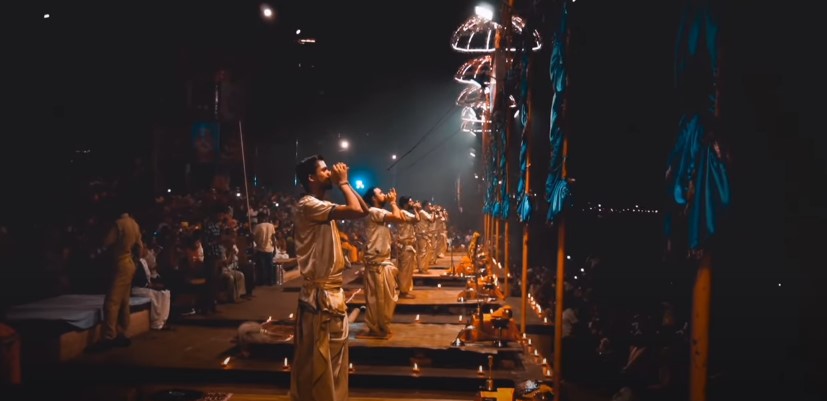
Varanasi is also famous for its traditional crafts. The city’s weavers produce exquisite Banarasi silk sarees, known for their intricate designs and fine quality. These sarees are highly sought after and are an essential part of Indian bridal trousseaus. Brassware, wooden toys, and glass beads are other traditional crafts that showcase the city’s rich artisanal heritage.
Festivals in Varanasi are celebrated with great enthusiasm and devotion. Diwali, the festival of lights, transforms the city into a glittering spectacle. Thousands of oil lamps illuminate the ghats and temples, creating a magical ambiance. Holi, the festival of colors, sees the streets of Varanasi filled with people joyfully throwing colored powders and dancing to traditional music.
One of the most unique festivals in Varanasi is Dev Deepawali, celebrated fifteen days after Diwali. On this occasion, the ghats are adorned with millions of earthen lamps, and the entire riverfront glows with divine light. The festival is dedicated to the river Ganges and is a visual and spiritual treat for both residents and visitors.
The city’s cultural calendar is also marked by the celebration of Maha Shivaratri, dedicated to Lord Shiva. Devotees fast, pray, and participate in night-long vigils, chanting hymns and offering prayers. The temples, especially the Kashi Vishwanath Temple, are thronged by pilgrims seeking the blessings of Shiva.
Another important festival is the Ganga Mahotsav, a five-day cultural extravaganza celebrating the sacred river Ganges. The festival features classical music and dance performances, boat races, and traditional crafts exhibitions. It is a celebration of the river’s cultural and spiritual significance.
Nag Nathaiya, a festival depicting the legend of Lord Krishna lifting the Govardhan Hill, is also celebrated with great zeal in Varanasi. The festival includes dramatic performances, processions, and cultural events that draw large crowds.
In conclusion, Varanasi’s rich cultural heritage is a testament to its historical significance and spiritual depth. The city’s festivals, arts, and crafts provide a window into the vibrant traditions that have been preserved and cherished over centuries. Visiting Varanasi is like stepping into a living museum where every street, ghat, and temple tells a story of the past while pulsating with the energy of the present.
6. Exploring the Narrow Lanes and Bazaars of Varanasi
Varanasi, one of the oldest cities in the world, is famous for its narrow lanes and bustling bazaars. These lanes, often no wider than a few feet, weave a complex maze that is both enchanting and bewildering. Exploring these lanes offers a unique glimpse into the daily life, culture, and history of Varanasi.
The narrow lanes of Varanasi are a sensory overload. As you walk through them, you will encounter the sounds of temple bells, the smell of incense, and the sight of vibrant street life. These lanes are home to small temples, shrines, and traditional houses, many of which have stood for centuries. Each lane has its own charm and character, offering something new around every corner.
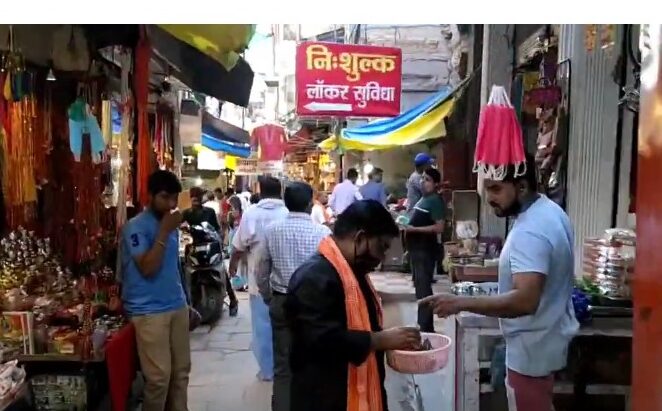
One of the most famous lanes is the Vishwanath Gali, which leads to the Kashi Vishwanath Temple. This lane is always bustling with pilgrims, devotees, and tourists. Lined with shops selling religious items, souvenirs, and sweets, Vishwanath Gali is a vibrant and chaotic experience. The energy and fervor of this lane are palpable, making it a must-visit for anyone exploring Varanasi.
Thatheri Bazaar is another notable lane, known for its brassware and metal crafts. The sound of hammering metal fills the air as artisans create beautiful brass items, from household utensils to decorative pieces. Walking through this bazaar, you can witness the traditional craft that has been passed down through generations.
If you are a food lover, the narrow lanes of Varanasi are a culinary delight. Kachori Gali is famous for its delicious street food. Here, you can savor local delicacies like kachoris (deep-fried bread filled with spiced lentils), jalebis (sweet spirals), and lassis (yogurt-based drinks). The aroma of frying snacks and the sight of locals and tourists indulging in these treats make it a gastronomic paradise.
The bazaars of Varanasi are a shopper’s delight. The Chowk area is one of the oldest markets in Varanasi, offering everything from textiles and jewelry to spices and household items. This bustling market is perfect for picking up Banarasi silk sarees, known for their exquisite craftsmanship and intricate designs. The sarees here are a testament to Varanasi’s rich textile heritage.
Godaulia Market is another popular shopping destination. It is a lively and crowded place where you can find a variety of goods, including traditional clothes, handicrafts, and souvenirs. The market is also known for its vibrant atmosphere, with street vendors calling out to passersby and shops displaying their colorful wares.
Exploring the narrow lanes and bazaars of Varanasi is not just about shopping or sightseeing; it is about experiencing the soul of the city. The lanes are alive with the rhythms of daily life, where locals go about their routines, shopkeepers engage in lively bargaining, and children play in the alleys. The mix of old-world charm and modern hustle creates a unique and unforgettable experience.
In conclusion, the narrow lanes and bazaars of Varanasi offer a captivating journey into the heart of the city. They are a microcosm of Varanasi’s rich cultural heritage, bustling trade, and vibrant street life. Whether you are seeking religious sites, traditional crafts, delicious food, or simply the essence of the city, these lanes and bazaars are the perfect places to explore.
7. The Art and Craft of Varanasi: From Silk Weaving to Brassware
Varanasi, an ancient city with a rich cultural heritage, is renowned for its traditional arts and crafts. From exquisite silk weaving to intricate brassware, the artisans of Varanasi have been creating masterpieces for centuries. These crafts not only reflect the city’s artistic legacy but also its cultural and historical significance.
One of the most famous crafts of Varanasi is Banarasi silk weaving. Banarasi silk sarees are celebrated for their fine quality, intricate designs, and opulent textures. These sarees are a staple in Indian weddings and festive occasions, symbolizing elegance and tradition. The weaving process is meticulous and time-consuming, involving skilled artisans who create detailed patterns using gold and silver threads. The sarees often feature motifs like flowers, leaves, and traditional designs, making each piece a work of art.
The tradition of silk weaving in Varanasi dates back to the Mughal era. The Mughal rulers were great patrons of arts and crafts, and their influence is evident in the designs and techniques used in Banarasi silk. Today, despite modern challenges, the craft continues to thrive, with weavers adapting to contemporary tastes while preserving traditional methods.

Brassware is another prominent craft in Varanasi. The city is known for its high-quality brass items, including utensils, religious idols, and decorative pieces. The art of brass crafting requires precision and skill, as artisans shape and engrave brass sheets into beautiful objects. Thatheri Bazaar is a well-known market in Varanasi where you can see craftsmen at work and purchase brass items. The intricate detailing and fine finish of these products reflect the mastery of the artisans.
Wooden toys are a charming craft of Varanasi. These toys, made from locally sourced wood, are painted with bright colors and often depict animals, birds, and traditional figures. The craft is rooted in the city’s cultural traditions and is popular among both locals and tourists. The wooden toys of Varanasi are not just playthings but also serve as decorative items, showcasing the city’s artistic flair.
Glass bead making is another unique craft of Varanasi. The artisans create stunning glass beads that are used in jewelry and decorative items. The process involves melting glass rods and shaping them into beads, which are then intricately decorated. The beads come in various colors and patterns, reflecting the creativity and skill of the craftsmen. Varanasi’s glass beads are highly sought after and are exported to various parts of the world.
Stone carving is also a significant craft in Varanasi. The city is known for its beautifully carved stone sculptures and architectural elements. Artisans use local sandstone and marble to create intricate designs on temples, ghats, and buildings. The craftsmanship is evident in the detailed carvings, which often depict religious motifs, floral patterns, and geometric designs. The stone carvings of Varanasi are a testament to the city’s rich architectural heritage.
In conclusion, the art and craft of Varanasi are integral to its cultural identity. The city’s artisans, with their exceptional skills and dedication, continue to preserve and promote traditional crafts. Whether it is the luxurious Banarasi silk sarees, the finely crafted brassware, or the charming wooden toys, each piece reflects the artistic heritage of Varanasi. Exploring these crafts provides a deeper appreciation of the city’s rich history and vibrant culture.
8. Culinary Delights of Varanasi: A Food Lover’s Journey
Varanasi, the spiritual heart of India, is also a paradise for food lovers. The city’s culinary scene is a rich tapestry of flavors, reflecting its cultural heritage and traditions. From savory snacks to sweet treats, the food of Varanasi offers a delectable journey for the taste buds.
A visit to Varanasi is incomplete without indulging in its street food. The city’s narrow lanes and bustling markets are lined with food stalls serving an array of mouthwatering snacks. One of the most popular street foods is kachori, a deep-fried bread filled with spicy lentils or peas. Kachoris are typically served with tangy tamarind chutney and spicy potato curry, making for a delightful and satisfying meal.
Chaat is another beloved street food in Varanasi. The city’s chaat vendors offer a variety of options, including aloo tikki (spiced potato patties), pani puri (crispy hollow puris filled with spicy water), and dahi puri (puffed puris topped with yogurt and chutneys). The combination of sweet, sour, and spicy flavors in Varanasi’s chaat is an explosion of taste that leaves a lasting impression.
For those with a sweet tooth, Varanasi has an array of traditional sweets to offer. One of the most famous sweets is the Banarasi lassi, a thick yogurt-based drink topped with a generous layer of malai (cream) and flavored with rose water or saffron. The lassi is served in earthen pots, adding a rustic charm to this refreshing beverage.

Another iconic sweet treat is the malaiyo, a frothy, saffron-flavored dessert available only during the winter months. Made from milk and flavored with cardamom and saffron, malaiyo is a light and airy dessert that melts in your mouth. It is often garnished with pistachios and almonds, adding a delightful crunch to the creamy texture.
Varanasi is also known for its delicious paan, a betel leaf preparation filled with various ingredients like areca nut, slaked lime, and sweeteners. The Banarasi paan is renowned for its unique flavor and is a popular post-meal treat. It is believed to aid digestion and freshen the breath, making it a fitting end to a hearty meal.
If you are looking for a more substantial meal, Varanasi offers a variety of traditional dishes that are sure to satisfy. Baati chokha, a rustic dish from the Bhojpuri region, is a must-try. Baati are round, baked wheat balls served with chokha, a mashed mixture of roasted eggplant, tomatoes, and potatoes. The dish is typically accompanied by ghee (clarified butter) and chutney, making it a flavorful and wholesome meal.
Tamatar chaat is another unique dish that showcases the culinary creativity of Varanasi. It is made with mashed tomatoes cooked with spices and served with crispy puris. The tangy and spicy flavors of tamatar chaat make it a popular choice among locals and visitors alike.
In conclusion, the culinary delights of Varanasi offer a rich and diverse experience for food lovers. The city’s street food, traditional sweets, and hearty dishes reflect its cultural heritage and culinary traditions. Exploring the food of Varanasi is not just a journey of taste but also an immersion into the city’s vibrant and lively atmosphere. Whether you are savoring a hot kachori, sipping on a refreshing lassi, or enjoying a sweet malaiyo, the flavors of Varanasi are sure to leave you craving for more.
9. Educational and Research Institutions in Varanasi
Varanasi, one of the oldest cities in the world, is not only a spiritual hub but also a center for education and research. The city is home to several prestigious institutions that contribute significantly to various fields of knowledge and research.
Banaras Hindu University (BHU) is the most prominent educational institution in Varanasi. Founded in 1916 by Pandit Madan Mohan Malaviya, BHU is one of the largest residential universities in Asia. The university offers a wide range of undergraduate, postgraduate, and doctoral programs across various disciplines, including arts, sciences, engineering, and medicine. BHU is renowned for its rigorous academic standards, distinguished faculty, and vibrant campus life. The university also houses the Institute of Medical Sciences (IMS), which is one of the leading medical colleges in India.
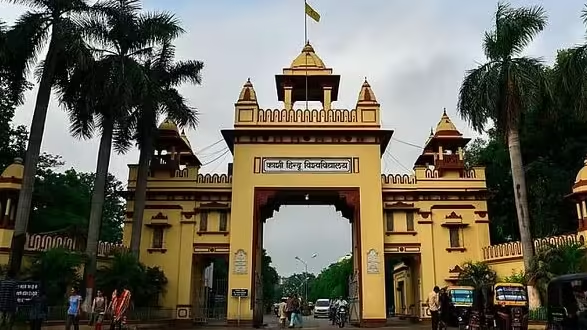
Apart from BHU, Varanasi is home to the Central Institute of Higher Tibetan Studies (CIHTS), the only university in the world dedicated to Tibetan studies. Established in 1967, CIHTS aims to preserve and promote Tibetan culture and heritage. The institute offers courses in Buddhist philosophy, Tibetan medicine, language, and literature. It also conducts research in various aspects of Tibetan culture and serves as a resource center for scholars from around the world.
The Sampurnanand Sanskrit University, another prestigious institution in Varanasi, is dedicated to the study of Sanskrit and ancient Indian knowledge systems. Founded in 1958, the university offers courses in Sanskrit literature, grammar, philosophy, and other traditional disciplines. It plays a crucial role in preserving and promoting the rich cultural heritage of India through its academic and research activities.
Varanasi is also known for its contributions to music and performing arts. The city has produced several renowned musicians and artists who have significantly impacted the field of classical music. The Faculty of Performing Arts at BHU is a prominent center for the study and practice of music, dance, and drama. The faculty offers various programs in Hindustani classical music, vocal and instrumental music, and dance, nurturing the next generation of artists.
In addition to these institutions, Varanasi is home to several research centers and think tanks that contribute to various fields of knowledge. The Kashi Vidyapith, a public university established in 1921, is known for its research in social sciences, humanities, and science. The university has a strong focus on community development and social justice, reflecting its commitment to addressing societal issues through education and research.
The city also houses the Indian Institute of Technology (IIT) BHU, one of the premier engineering institutions in India. IIT BHU offers undergraduate, postgraduate, and doctoral programs in various engineering disciplines. The institute is known for its cutting-edge research, innovation, and entrepreneurship initiatives, contributing significantly to technological advancements and industrial growth.
In conclusion, Varanasi is a hub of educational and research institutions that contribute to various fields of knowledge and culture. The city’s universities and research centers play a crucial role in preserving its rich cultural heritage while fostering academic excellence and innovation. Whether it is the study of ancient Indian knowledge systems, Tibetan culture, classical music, or modern engineering, Varanasi offers a diverse and enriching environment for students and scholars alike.
10. Modern Varanasi: Balancing Tradition and Progress
Varanasi, one of the oldest continuously inhabited cities in the world, is a fascinating blend of tradition and modernity. As it steps into the future, the city retains its rich cultural heritage while embracing progress and development.
One of the most striking aspects of modern Varanasi is its commitment to preserving its ancient traditions. The city’s ghats, temples, and narrow lanes remain vibrant centers of religious and cultural activity. The daily rituals, festivals, and ceremonies that have been practiced for centuries continue to thrive, drawing pilgrims and tourists from around the world.
At the same time, Varanasi is witnessing significant infrastructural development and modernization. The city’s connectivity has improved with better road networks, modern railway stations, and the development of the Lal Bahadur Shastri International Airport. These improvements have made Varanasi more accessible, facilitating the movement of people and goods.
The Namami Gange project, an initiative aimed at cleaning and rejuvenating the Ganges River, is one of the key developments in modern Varanasi. The project focuses on reducing pollution, improving sewage treatment, and promoting sustainable practices to preserve the river’s ecological health. This initiative reflects the city’s commitment to balancing environmental sustainability with its spiritual and cultural significance.
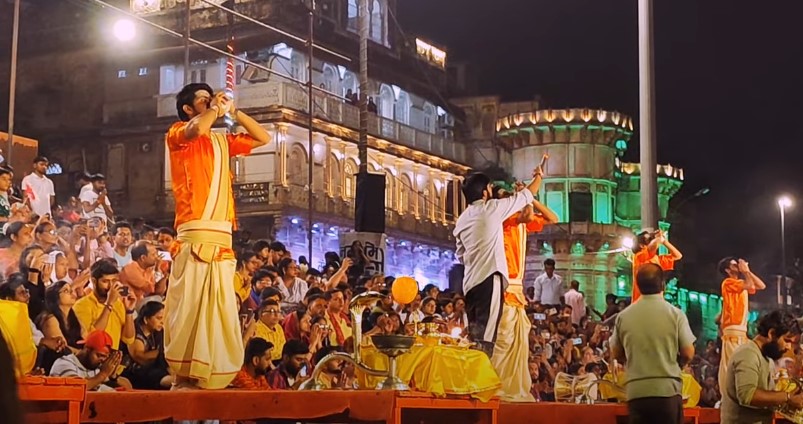
Varanasi is also emerging as a hub for education and research. Institutions like Banaras Hindu University (BHU) and the Indian Institute of Technology (IIT) BHU continue to attract students and scholars from across the country and beyond. These institutions are at the forefront of academic excellence and research, contributing to various fields of knowledge and innovation.
The city’s economy is diversifying, with traditional crafts like silk weaving and brassware coexisting with modern industries. The handloom and handicraft sectors remain significant sources of livelihood for many artisans, while new businesses and startups are also making their mark. The establishment of industrial parks and business incubators is fostering entrepreneurship and economic growth.
Tourism is another vital aspect of modern Varanasi. The city’s historical and spiritual attractions, coupled with its vibrant culture, make it a popular destination for domestic and international tourists. The government and local authorities are investing in infrastructure and amenities to enhance the tourist experience. This includes the development of heritage walks, improved accommodation facilities, and the promotion of cultural tourism.
In the healthcare sector, Varanasi is witnessing advancements with the establishment of modern hospitals and medical facilities. The Institute of Medical Sciences at BHU and other healthcare institutions are providing high-quality medical education and services. Efforts are being made to improve public health and access to healthcare, benefiting the local population.
Modern Varanasi is also embracing digital transformation. The city is part of the Smart Cities Mission, an initiative aimed at using technology to enhance urban living. Projects under this mission include the development of smart infrastructure, e-governance, and digital services. These initiatives aim to improve the quality of life for residents while preserving the city’s unique heritage.
In conclusion, modern Varanasi is a dynamic blend of tradition and progress. The city is successfully navigating the challenges of preserving its ancient heritage while embracing the opportunities of the future. As it continues to evolve, Varanasi remains a symbol of continuity and change, reflecting the timeless essence of India.
11. Spiritual Practices and Rituals in Varanasi
The day in Varanasi begins with the Ganga Aarti, a ritual that takes place at dawn and dusk on the ghats along the Ganges River. The most famous aarti is held at the Dashashwamedh Ghat. Priests perform the aarti with great reverence, using lamps, incense, and chants to honor the river Ganges, considered a goddess in Hinduism. The sight of hundreds of lamps floating on the river, accompanied by the sounds of bells and chants, creates a mesmerizing and serene atmosphere.
Varanasi, often referred to as the spiritual capital of India, is a city where spirituality and rituals are deeply ingrained in daily life. The practices and rituals of Varanasi offer profound insights into Hindu traditions and beliefs, attracting pilgrims and spiritual seekers from around the world.
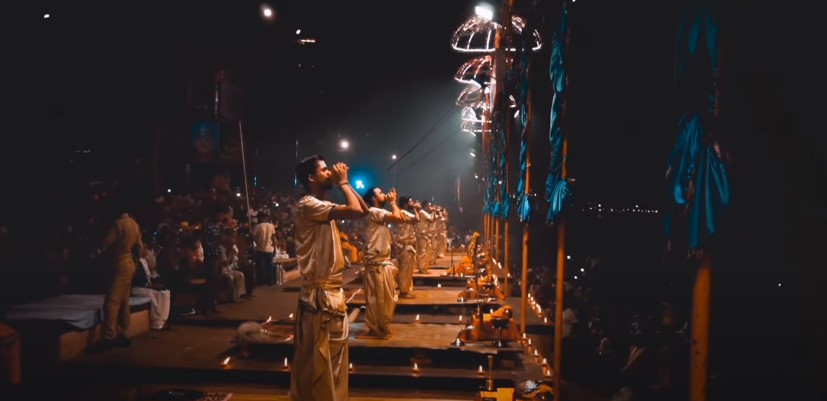
Another significant spiritual practice in Varanasi is the ritual of taking a dip in the Ganges. Hindus believe that bathing in the sacred river purifies the soul and washes away sins. Pilgrims from all over India and the world come to Varanasi to perform this ritual. The ghats are filled with devotees performing their morning ablutions, offering prayers, and making offerings to the river.
Manikarnika Ghat and Harishchandra Ghat are the two primary cremation ghats in Varanasi, where the dead are cremated in accordance with Hindu rituals. It is believed that those who die in Varanasi and have their ashes immersed in the Ganges attain moksha, or liberation from the cycle of birth and death. The cremation process is a solemn and deeply spiritual practice, reflecting the Hindu belief in the impermanence of life and the cycle of rebirth.
The temples of Varanasi are central to its spiritual life. The Kashi Vishwanath Temple, dedicated to Lord Shiva, is one of the most revered temples in India. Pilgrims visit the temple to offer prayers, perform rituals, and seek blessings. The temple complex is a hub of spiritual activity, with devotees chanting mantras, performing abhishekam (ritual bathing of the deity), and participating in various ceremonies.
Another important temple is the Sankat Mochan Hanuman Temple, dedicated to Lord Hanuman. Devotees visit this temple to seek relief from troubles and obstacles, as Hanuman is believed to be the remover of hardships. The temple is especially crowded on Tuesdays and Saturdays, which are considered auspicious days for worshiping Hanuman.
Varanasi is also known for its traditional ashrams and yoga centers, where spiritual seekers can engage in meditation, yoga, and other spiritual practices. These centers offer a tranquil environment for those looking to deepen their spiritual practice and connect with their inner self. The teachings of renowned spiritual leaders and gurus attract followers from across the globe.
The city’s spiritual practices are not limited to Hinduism. Varanasi is also significant in Buddhism. Sarnath, located just a few kilometers from Varanasi, is where Lord Buddha gave his first sermon after attaining enlightenment. The Dhamek Stupa and the Mulagandhakuti Vihara are important Buddhist sites in Sarnath. Pilgrims and tourists visit these sites to meditate, offer prayers, and learn about Buddhist teachings.
In conclusion, the spiritual practices and rituals of Varanasi are a testament to the city’s profound spiritual heritage. The daily rituals, temple activities, and the serene atmosphere of the ghats create a unique spiritual experience. For pilgrims and spiritual seekers, Varanasi offers a journey into the heart of Hindu traditions and a deeper understanding of the essence of life and death.
12. Historical Landmarks and Monuments in Varanasi
Varanasi, one of the oldest inhabited cities in the world, is a treasure trove of historical landmarks and monuments. These structures not only tell the story of the city’s rich past but also showcase its architectural splendor and cultural significance.
One of the most iconic landmarks in Varanasi is the Ramnagar Fort, located on the eastern bank of the Ganges River. Built in the 18th century by Kashi Naresh Raja Balwant Singh, the fort is a fine example of Mughal architecture with its ornate balconies, courtyards, and pavilions. The fort houses a museum displaying vintage cars, royal palanquins, costumes, and an impressive collection of antique weaponry. The fort is also famous for the Ramnagar Ramlila, a month-long performance of the Ramayana that attracts thousands of spectators.
The Alamgir Mosque, also known as the Beni Madhav Ka Darera, is another significant historical monument. Built by the Mughal Emperor Aurangzeb on the site of a demolished Hindu temple, the mosque is a striking blend of Hindu and Islamic architectural styles. Its lofty minarets and intricately designed interiors make it a notable landmark. The mosque offers a panoramic view of the Ganges and the surrounding areas.
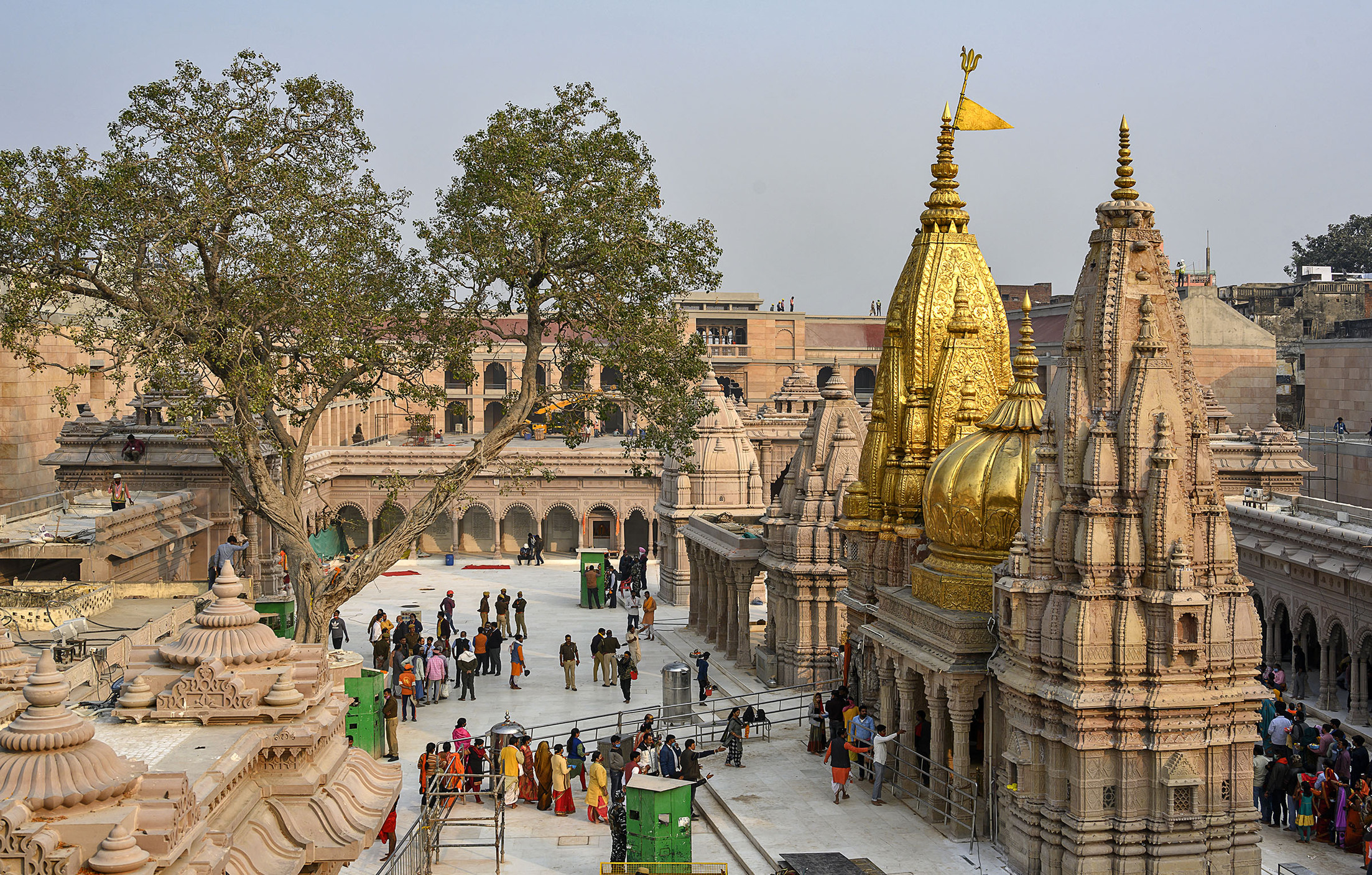
Sarnath, located a short distance from Varanasi, is a site of immense historical and religious importance. It is where Lord Buddha delivered his first sermon after attaining enlightenment. The Dhamek Stupa, built by Emperor Ashoka in 249 BCE, is a prominent monument in Sarnath. The stupa is adorned with intricate carvings and stands as a symbol of the spread of Buddhism. The nearby Ashoka Pillar, with its four-lion capital, is an iconic emblem of India and a testament to the region’s historical significance.
The Chunar Fort, situated on the banks of the Ganges River, is another historical landmark worth visiting. The fort’s history dates back to the reign of the Maurya and Gupta dynasties. It has witnessed numerous battles and has been ruled by various dynasties, including the Mughals and the British. The fort’s architecture reflects its diverse history, with features like underground tunnels, step wells, and ancient inscriptions.
The Bharat Kala Bhavan, located within the Banaras Hindu University campus, is a museum that houses an extensive collection of artifacts, paintings, textiles, and sculptures. Established in 1920, the museum offers a glimpse into the artistic and cultural heritage of Varanasi and India. Its collection includes rare manuscripts, miniature paintings, and folk art, making it a must-visit for history and art enthusiasts.
The Jantar Mantar, an astronomical observatory built by Maharaja Jai Singh II in the 18th century, is another historical marvel. The observatory consists of several large instruments used for measuring time, predicting eclipses, and studying celestial bodies. The precision and ingenuity of these instruments highlight the advanced scientific knowledge of the time.
In conclusion, the historical landmarks and monuments of Varanasi are a testament to the city’s rich and diverse heritage. From ancient forts and mosques to Buddhist stupas and museums, these structures offer a fascinating journey through time. Exploring these landmarks provides a deeper understanding of Varanasi’s historical significance and its role in shaping the cultural and spiritual fabric of India.
13. The Ghats of Varanasi: Life and Death on the River
The ghats of Varanasi, a series of steps leading down to the Ganges River, are the heart and soul of the city. These ghats are not only places of spiritual significance but also bustling centers of daily life, where the sacred and the mundane coexist harmoniously.
There are around 88 ghats in Varanasi, each with its own unique history and significance. The most prominent of these is the Dashashwamedh Ghat, believed to be the oldest and most important ghat in Varanasi. According to legend, Lord Brahma created this ghat to welcome Lord Shiva. The ghat is a hub of activity, with pilgrims performing rituals, priests offering prayers, and tourists taking boat rides on the river. The evening Ganga Aarti at Dashashwamedh Ghat is a spectacular event, drawing large crowds who gather to witness the mesmerizing ceremony.
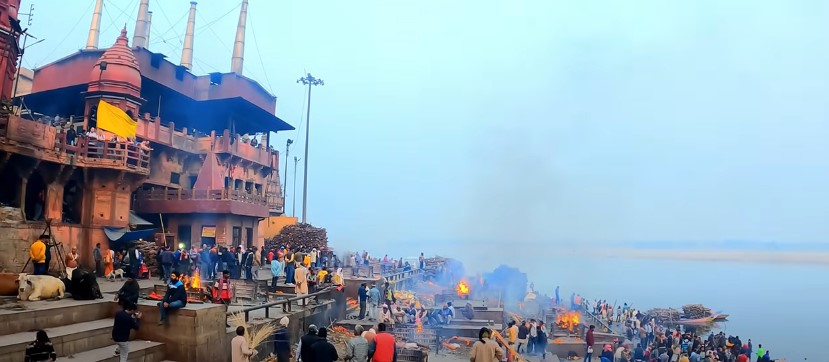
Assi Ghat, located at the confluence of the Ganges and Assi rivers, is another significant ghat. It is mentioned in various ancient texts and is considered a sacred spot for Hindus. The ghat is less crowded than Dashashwamedh Ghat, making it a peaceful place for meditation and contemplation. Early morning yoga sessions and evening aartis are common sights at Assi Ghat, attracting both locals and tourists.
Manikarnika Ghat and Harishchandra Ghat are the two main cremation ghats in Varanasi. Manikarnika Ghat is considered the most sacred of all, where Hindus believe that being cremated can break the cycle of rebirth and grant moksha, or liberation. The ghat operates 24/7, with funeral pyres burning continuously. The sight of cremations at Manikarnika Ghat is a stark reminder of the transient nature of life and death. Harishchandra Ghat, though smaller, is equally significant and revered.
The ghats are also centers of daily life and commerce. Bathing ghats, such as Kedar Ghat and Lalita Ghat, are popular spots for locals and pilgrims to take a holy dip in the Ganges. These ghats are filled with the sounds of people chanting prayers, children playing, and vendors selling flowers and religious items. The vibrant life on the ghats reflects the dynamic spirit of Varanasi.
In addition to their spiritual significance, the ghats of Varanasi are also hubs of cultural activity. Festivals like Dev Deepawali, a festival of lights celebrated fifteen days after Diwali, transform the ghats into a dazzling spectacle of lamps and lights. The entire riverfront glows with millions of earthen lamps, creating a magical ambiance. The ghats are also venues for classical music and dance performances, showcasing the rich cultural heritage of the city.

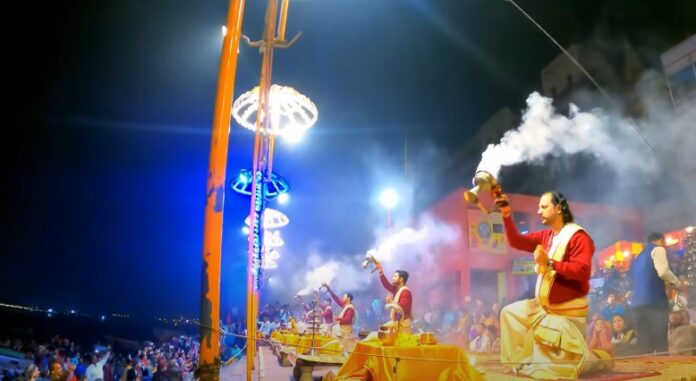
Hi, this is a comment.
To get started with moderating, editing, and deleting comments, please visit the Comments screen in the dashboard.
Commenter avatars come from Gravatar.
[…] transitioned into mainstream Bollywood, earning respect and admiration for her work. Her journey is a testament to her resilience, talent, and ability to reinvent […]